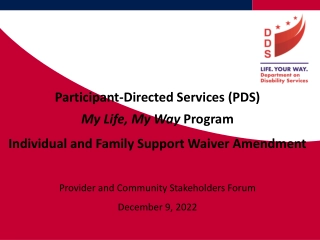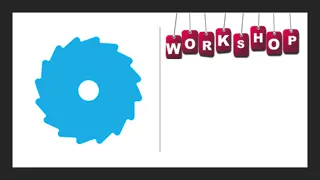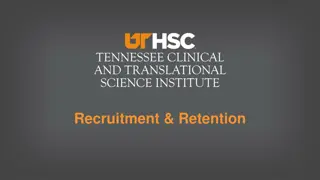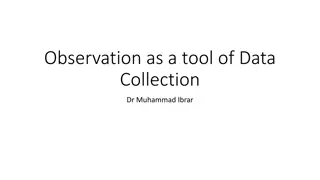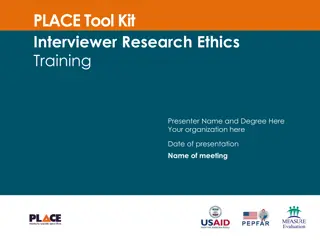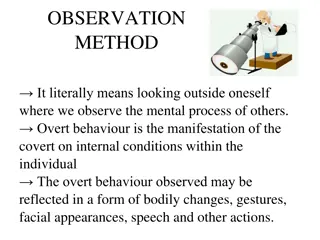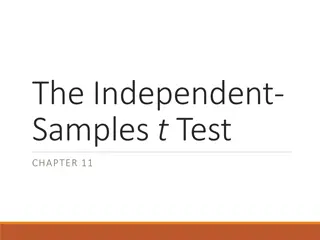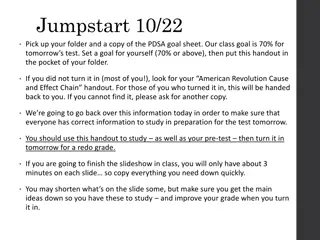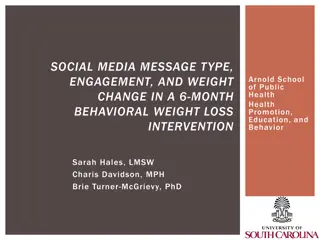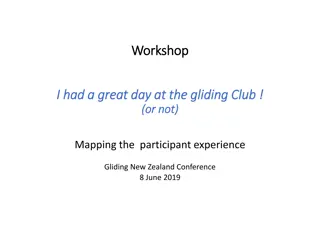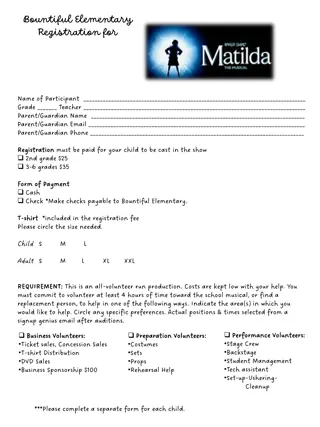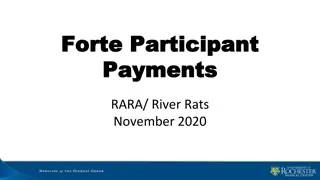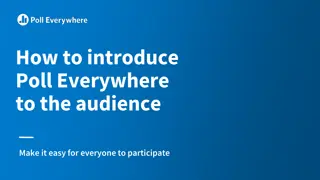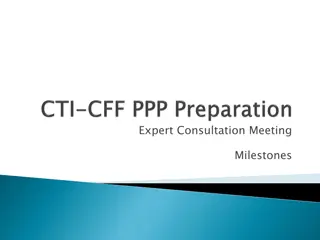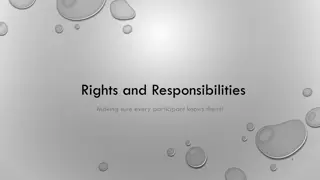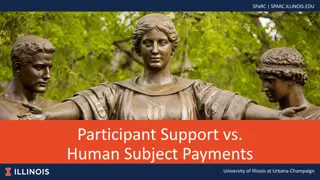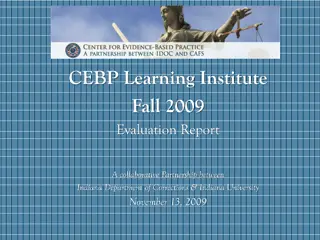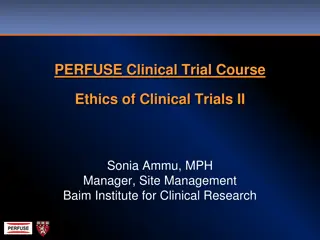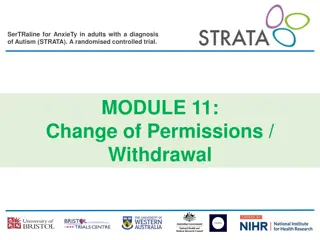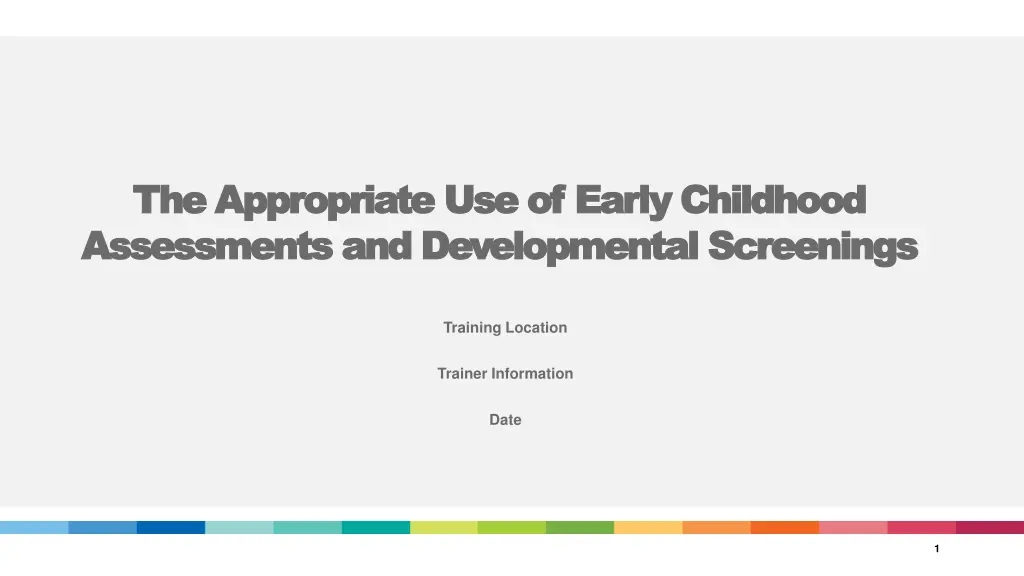
Understanding Developmental Screenings in Early Childhood
Explore the importance of developmental screenings for young children, learn how screenings help identify developmental delays, and understand who performs these screenings. Discover the significance of assessments and gain insights into the screening process.
Download Presentation

Please find below an Image/Link to download the presentation.
The content on the website is provided AS IS for your information and personal use only. It may not be sold, licensed, or shared on other websites without obtaining consent from the author. If you encounter any issues during the download, it is possible that the publisher has removed the file from their server.
You are allowed to download the files provided on this website for personal or commercial use, subject to the condition that they are used lawfully. All files are the property of their respective owners.
The content on the website is provided AS IS for your information and personal use only. It may not be sold, licensed, or shared on other websites without obtaining consent from the author.
E N D
Presentation Transcript
The The Appropriate Use Appropriate Use of Assessments Assessments and of Early Childhood Early Childhood Developmental Screenings and Developmental Screenings Training Location Trainer Information Date 1
Reflective Activity Reflective Activity What questions do you have around screening and assessment? 2
Session Objectives Session Objectives Participants will Examine different types of developmental screenings, assessments, and supplemental assessments. Be able to apply this information as they participate in Spark. 3
Screening Screening This session covers developmental screenings for children birth through 6 years of age. There are other types of screenings such as mental health screenings, health screenings, etc. This session will focus on the developmental screening as it relates to LD9 in the Spark portfolio. 4
What is a Developmental What is a Developmental Screening? Screening? The practice of looking for and monitoring signs that a child may be delayed in one or more areas of development and/or to confirm that they are typically developing. Screening is not meant to establish a diagnosis for the child. Helps determine whether more in-depth assessment is needed. 5
Why do we use Screenings? Why do we use Screenings? To help identify whether a child may need an additional evaluation or is typically developing. For example, a child may score low in the communication area and need an additional assessment to determine if there is a delay and a need for support services. Support services may be private (medically related) or a part of the Special Education system from your local Education Service District (EI/ECSE). 6
Who does the Screening? Who does the Screening? Anyone who works with the child: Families (parent/guardian) Early intervention professionals Early childhood and special education educators Social service providers Public health providers Home visitors and parent educators Pediatricians and nurses Other early childhood professionals 7
Screening and Spark Screening and Spark For a 3-star rating The Ages and Stages Questionnaire (ASQ) is performed on each child within 45 days of when the child enters the program and on an annual basis in order to refer children for specialized assessment when indicated. Note: This indicator is not applicable for school-age children. Evidence Program policy on conducting screening and referring children for additional, specialized assessment that addresses the criteria above. And A copy of one completed ASQ screening with the child s name removed. 8
Spark Screening Requirement Spark Screening Requirement Spark requires the ASQ ASQ measures 5 key areas of development: 1. Communication 2. Gross Motor 3. Fine Motor 4. Problem Solving 5. Personal-Social 9
Why do you have to use the Why do you have to use the ASQ for Spark? ASQ for Spark? The State of Oregon s Early Learning Council adopted the Ages and Stages Questionnaire (ASQ) as the statewide screening to be used in Oregon. 10
ASQ ASQ Ages and Stages Questionnaire Designed to be completed by parents or caregivers. Includes simple directions to help indicate children s skills in language, personal-social, fine and gross motor, and problem solving. http://asqoregon.com/ 11
About the ASQ About the ASQ ASQ includes about 30 items for each age range Used to determine which children need further evaluation Published in English, Spanish, French & Korean; other translations are in development The target age range is Birth to 60 months Takes about 15 - 20 minutes to complete 12
Child Assessment Child Assessment 13
What is Child Assessment? What is Child Assessment? A systematic procedure for obtaining information from observation, interviews, portfolios, projects, tests, and other sources that can be used to make judgments about children s characteristics. (NAEYC) The process of gathering information about a child in order to make decisions about his/her education. 14
Types of Assessments Types of Assessments There are different types of assessments Program Staff/personnel Family Children s learning and development There are a variety of ways to assess children s learning and development and collect assessment information. 15
Types of Assessment Types of Assessment Formal and Informal/Natural/Authentic Formal Assessments broken down into: Norm-referenced Criterion-based Curriculum-based 16
Who Conducts Child Assessments? Who Conducts Child Assessments? Depends on the assessments May be providers, parents, or others 17
Why Programs Conduct Child Why Programs Conduct Child Assessments ? Assessments ? Assessments are conducted to: Find out what children are interested in Find out children s strengths and areas of difficulty Make informed decisions about interventions Find common needs Discover how children change over time Learn what children know in particular areas Link with instruction making sure instruction is responsive and appropriate, matching what children can and cannot do Serve as a basis to report to parents 18
Where Child Assessment Fits Where Child Assessment Fits with Spark with Spark Addressed in LD9 4 Star The program conducts assessment of learning and development for each child at least two times during the year and plans learning activities based on assessment information. 19
When Child Assessments When Child Assessments are Done are Done At least 2 times during year Early in year Later in year Spark specifies that assessments be conducted at least two times during the year. Some assessments are designed to be done quarterly. 20
Early Childhood Assessments Early Childhood Assessments and Spark and Spark Spark s Portfolio identifies two pre-approved assessments. Teaching Strategies Gold Assessment, Evaluation and Programming System (AEPS) Both assessments are designed for ages birth through age 6 If a program does not use either of these assessments, they need to provide a written description of how their assessment aligns with: Head Start Child Development and Early Childhood Framework Oregon s Early Childhood Foundations 21
Teaching Strategies Gold Teaching Strategies Gold Assesses children ages birth through kindergarten Available online and in print English and Spanish versions Covers 10 areas of development: social-emotional, physical, language, cognitive, literacy, mathematics, science and technology, social studies, the arts, English language acquisition 38 objectives are aligned with Common Core State Standards and Head Start Child Development and Early Learning Framework Observation based Basic online free training course/live phone help Number of online reports available including individual child/class/program Cost for Birth Through Kindergarten Toolkit: $200 http://www.frazercenter.org/files/2014/09/Teaching-Strategies-GOLD-Assessment- Touring-Guide-.pdf 22
AEPS and AEPS and AEPS AEPSi i Assessment for birth through age six. Two versions one for birth to three and one for children three to six AEPS Administration Guide provides instructions to use assessment Covers 6 developmental areas: fine motor, gross motor, cognitive, adaptive, social-communication, and social Tied to AEPS curriculum Can be used in center and home based programs Place on form to record scores quarterly Score 0 (does not pass), 1 (inconsistent performance) or 2 (passes consistently) Paper and online interactive versions English, Spanish, French and Korean versions Cost for Administration Guide, Test, Curriculum 0-3 and 3-6: $239; Administration Guide, Test, Curriculum 0-3: $179 (same for 3-6 ) http://www.aepsinteractive.com/. 24
What is Supplemental What is Supplemental Assessment? Assessment? Sometimes called informal assessments or ongoing assessments. A process that identifies the child s strengths and needs in addition to more formal assessment instruments. Additional information collected on child. Collected on an ongoing basis. 26
Why use Supplemental Why use Supplemental Assessments? Assessments? Allows providers to track the ongoing progress of children regularly and often Provides continual snapshots of where children are throughout the year Serves as a guide to help establish a current performance level in order to make informed instructional decisions Can provide valuable information to parents and educators Ensures that the curriculum is meeting the developmental stages of the children in their program 27
How can programs use How can programs use Supplemental Assessments? Supplemental Assessments? To plan future instruction so that child needs are met To help understand where and if children should be grouped for instruction To ensure that instruction is being delivered at the right pace To understand where children may need individual support 28
Who Does Supplemental Who Does Supplemental Assessments? Assessments? Families (parents/guardians) Child care providers Early intervention professionals Early childhood and special education educators Social service providers Public health providers Home visitors and parent educators Other early childhood professionals 29
Supplemental Assessments Supplemental Assessments and Spark and Spark LD 9 - 5 STAR (completion for a 3 and 4 star have previously been done) Samples of children s work, written accounts of specific observations, and information from family members are collected on an ongoing basis to supplement assessment. Evidence: Written description of supplemental assessment information collected on children. 30
Difference Between Child Difference Between Child Assessment and Screening Assessment and Screening Screening is designed to determine whether further testing is needed. It is not intended to be used to identify what needs to be taught. Child assessment is a more comprehensive process to determine child needs. Child assessments provide information to guide instructional decisions. 31
How the Daily Schedule and Weekly How the Daily Schedule and Weekly Plan are Tied to Child Assessment Plan are Tied to Child Assessment Information Information In the Spark Portfolio LD9 4 Star, programs are required to provide a written description of how the daily schedule and weekly plan are tied to assessment information. 32
What will you do the What will you do the same or different same or different regarding screening regarding screening and assessment in the and assessment in the coming year? coming year? 33

